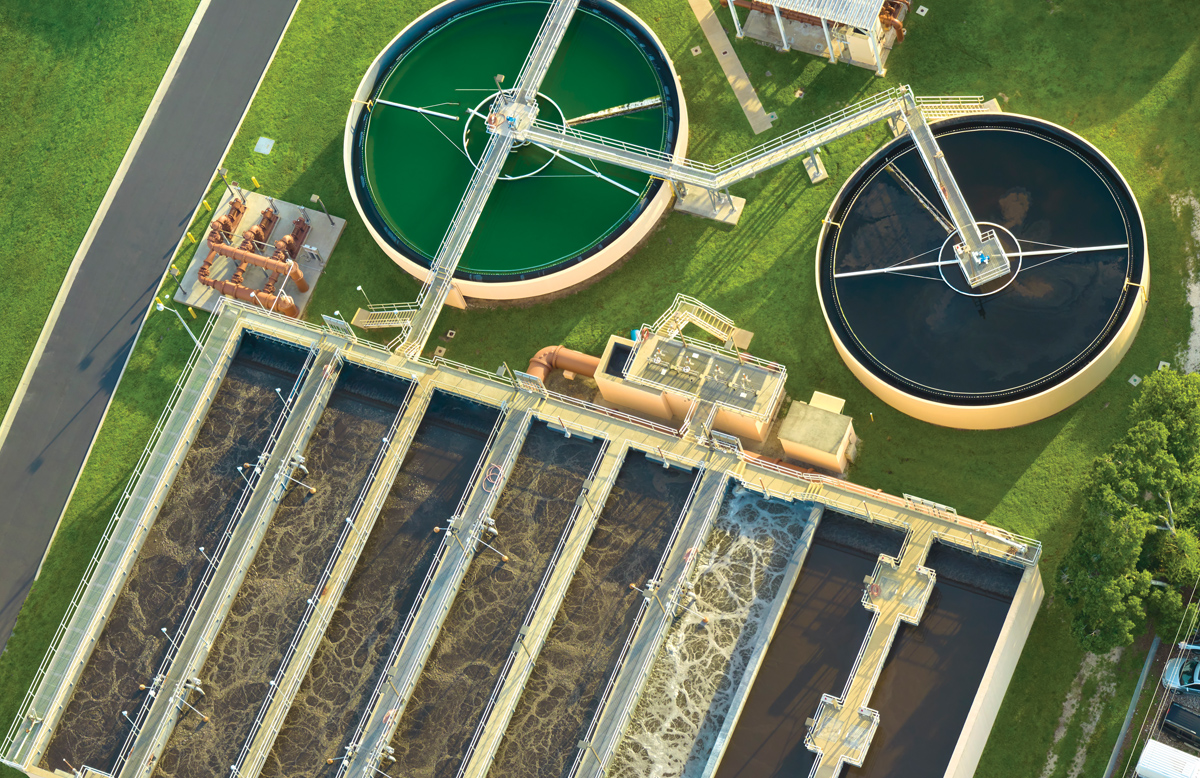Natural Selections
What Is the Worth of Clean Water?
An economic analysis finds that, in just two decades, the Clean Water Act helped improve water quality and promoted population growth in most U.S. towns- without breaking budgets.

The village of Walton, New York, faced a daunting task in 1972: It had to build a $5.8 million wastewater treatment plant with an annual operating budget of $556,000 and a taxpayer base of 3,700 residents. This was mandated by the federal Clean Water Act, aimed at making U.S. lakes and rivers fishable and swimmable again after decades of pollution with growing volumes of sewage.
More than 50 years later, assistant professor Rhiannon Jerch wanted to know if the massive investments in wastewater treatment plants — an estimated $2 trillion with more than 60% borne by local governments — had paid off for Walton and other towns like it.
“The 1972 Clean Water Act applied to all municipal sewage systems, with limited adjustments for their highly variable taxpayer base,” Jerch says. “To fully assess its costs and benefits, I wanted to consider the entire universe of American towns, half of which have fewer than 2,000 residents today.”
Jerch studies how public goods and services such as transit, water, and wastewater systems affect people and natural resources. The Clean Water Act (CWA), one of several landmark environmental laws passed in the 1970s, is a prime example of a centralized policy with major consequences for local budgets and shared resources.
The core of the CWA is a federal mandate requiring city governments to treat their wastewater with specific technology before discharging it into rivers, lakes, and other bodies of water. In the case of Walton, this meant building a new wastewater treatment plant. In other cases, it meant upgrading existing plants that only utilize primary treatment, the physical separation of organic waste from water. The upgrades added secondary treatment, biological processes that decompose organic waste, resulting in cleaner surface water and better wildlife protection— but at two to ten times the cost.
Jerch analyzed more than 3,100 cities that, in 1972, had primary treatment plants and populations ranging from a few hundred to over 1 million residents. She combined 25 years of data (1967–1992) from different government agencies to estimate the causal effect of the CWA on three outcomes of interest: the cost of the required upgrades; the resulting improvements in surface water quality (measured as dissolved oxygen levels); and the population growth that might be due, in part, to these improvements.
Because the CWA applied to all cities, Jerch compared a group of cities that had already installed the new technology by 1972 with another group of cities that had to upgrade after the law was passed. This required a statistical trick to ensure that the main difference between the two sets of cities was whether they upgraded before (control) or after 1972 (treatment). Since their other pre-1972 features were similar by design, she could attribute changes in outcome to the new mandate.
Jerch found that local governments financed the upgrades with increases in annual wastewater fees. On average, annual fees increased by threefold — up to $78 per resident — during the 25 years after the CWA. This increase was necessary because some cities did not receive federal CWA grants, or the awarded grants did not cover all costs. However, the increase in wastewater spending from 6% to nearly 20% of city budgets did not reduce the provision of other goods and services. A parallel increase in sales tax and license fee revenues may have covered some of the extra cost. This income, notes Jerch, may partially reflect greater spending on water recreation and waterfront businesses by residents and visitors.
The 20-year improvement in surface water quality near cities that upgraded their wastewater treatment after 1972 was 18% higher than in control cities. Thus, the environmental benefit of the federal mandate was significantly greater than expected if investment decisions had been left up to local governments.
Despite the higher fees, the 20-year population growth in cities that complied with the CWA was at least 13% higher than in control cities, suggesting that cleaner water attracted more residents. This was true for cities of any size, but most of the growth occurred in towns with fewer than 10,000 residents. These smaller towns grew 30% faster than control cities.
To explain why smaller cities might have experienced greater benefits, Jerch used the example of Chicago, located upstream from St. Louis on the Mississippi River. The state of Missouri filed a lawsuit against Chicago for polluting St. Louis water sources at the turn of the century. The city began to invest in secondary wastewater treatment in 1916, decades before the CWA.
Taking legal action against upstream neighbors is difficult and expensive. Since the federal mandate shifted the burden of improving wastewater management to polluters, says Jerch, it was especially helpful for smaller cities with limited means to negotiate for it. Other studies have also found that federal legislation improves the protection of natural resources that span state boundaries, including surface waters and groundwater aquifers.
“Communities of all sizes valued clean water enough to pay much higher fees for wastewater services, making cuts in other public goods and services unnecessary,” Jerch says. “Importantly, the water quality improvements achieved by the CWA helped accelerate population growth in the majority of U.S. towns — those with fewer than 10,000 residents — that may not have prioritized investments in clean water without it.”
This article was posted in Economic and Community Development, Health and Wellness, Healthy Ecosystems, Natural Selections, Summer 2025 and tagged agricultural and applied economics, Clean Water Act, economic value, environmental law, Rhiannon Jerch, Wastewater treatment, Water quality.
